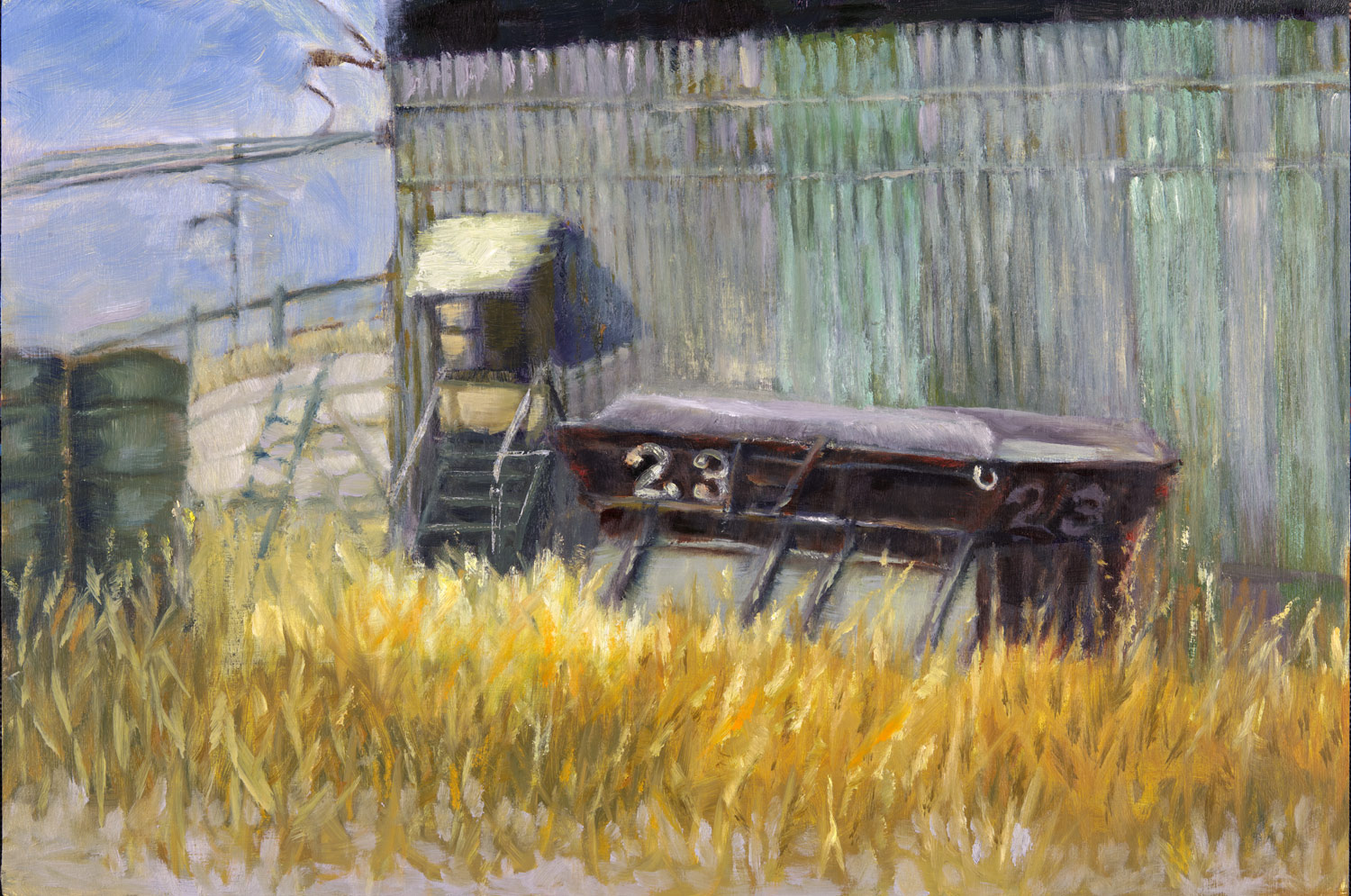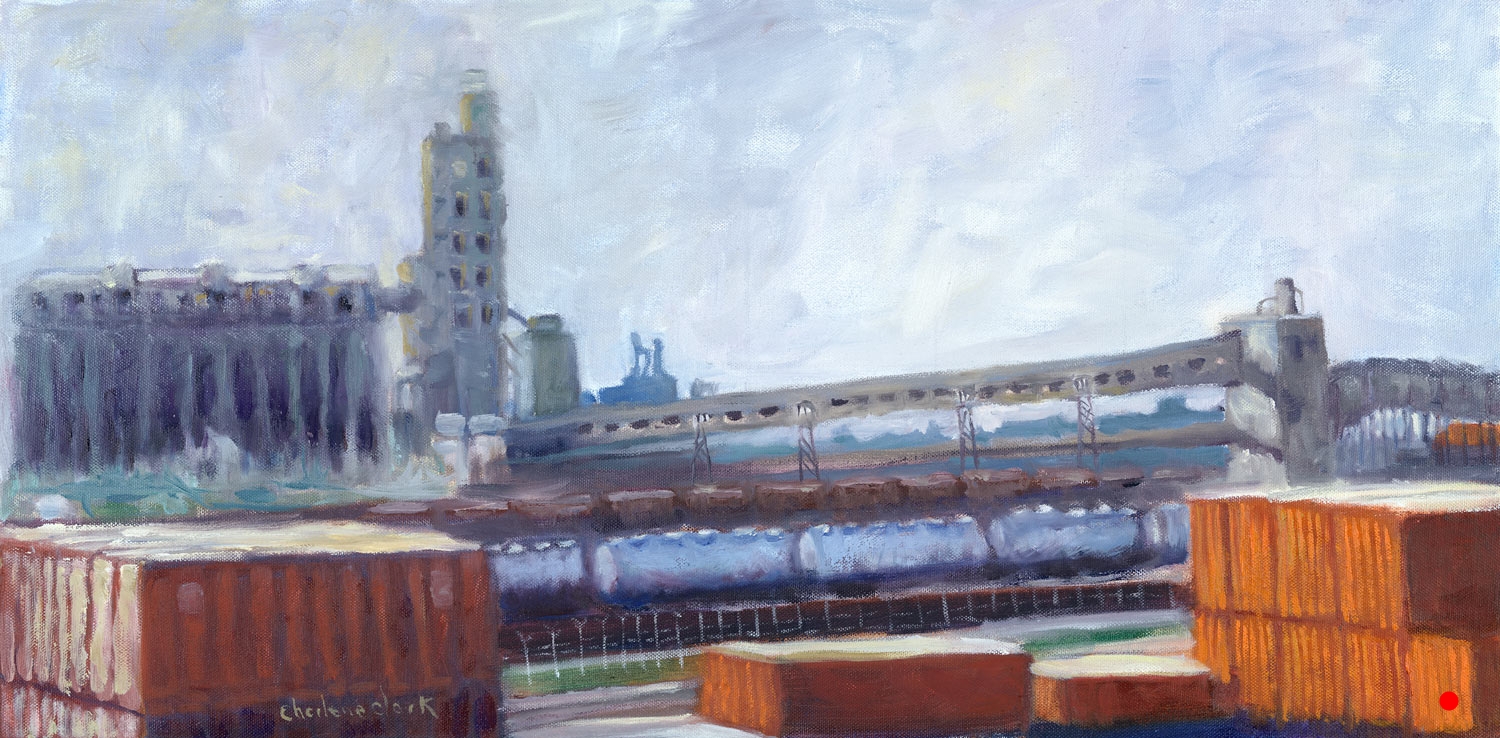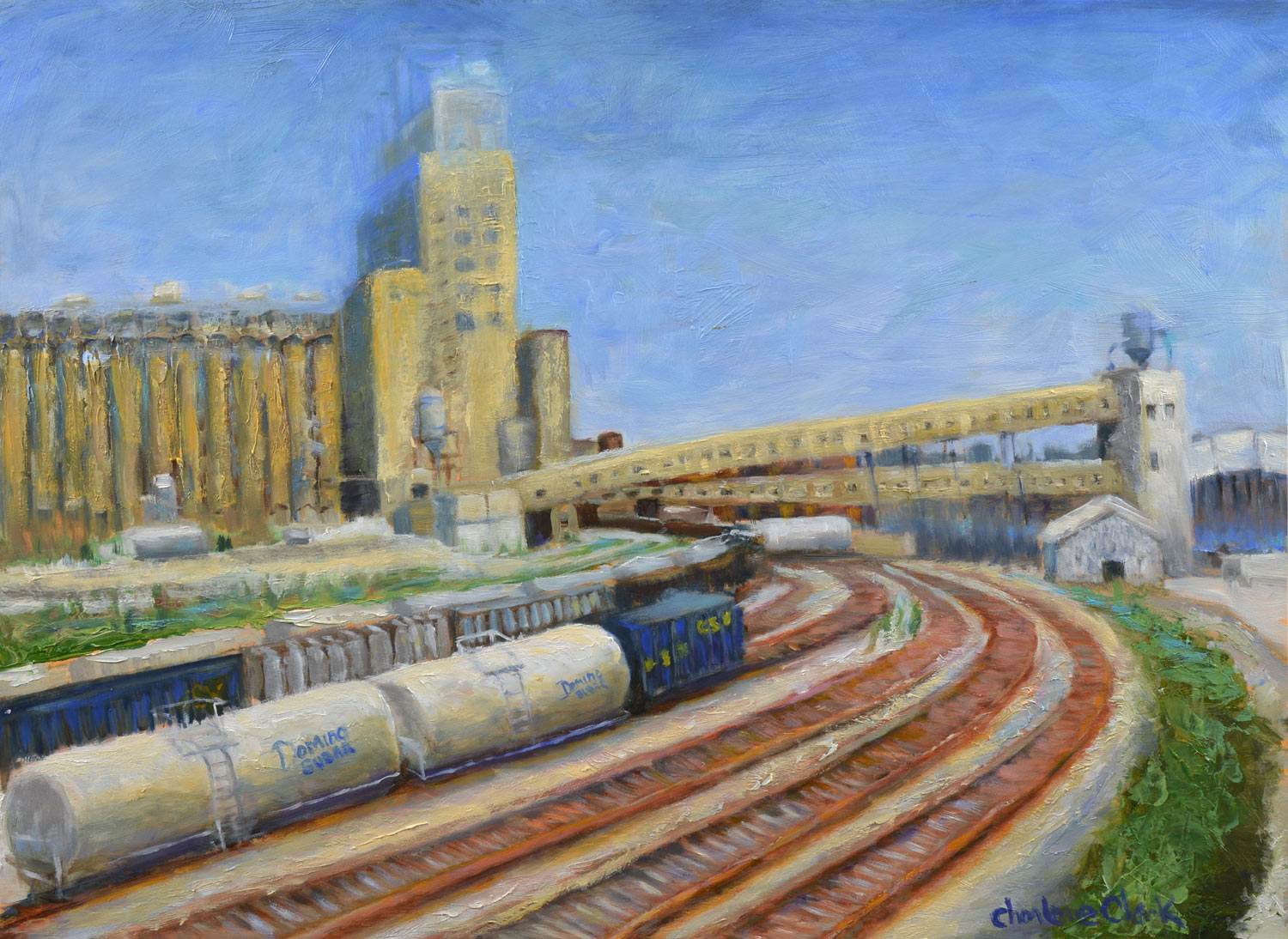








fine art studio baltimore, Maryland 21210 410.467.2106 email
Abandoned and operating industrial work sites in Baltimore, MD are included here. The Canton Coal Pier built in 1906, by the Pennsylvania Railroad, was a favorite place to visit while it was still a working coal yard. The sound and smell of the rolling coal cars and creaking cranes remains green in my memory. After it was abandoned in the 1980s I returned to investigate and take photos. I knew I was on the sacred grounds that marked the end of an era.
The Locust Point B & O grain silos were also a meditative spot to visit for inspiration. It was a dizzying puzzle to solve where trains and ships arrived and departed with the grain of the day.
At the corner of Gould and McComas Streets, also in South Baltimore, was a power generating station. The tall, black smokestacks of Baltimore Gas and Electric could be seen for miles on land or sea. Baltimoreans always referred to it as the smokestack building.
Unlike the tourist spot we know today, the Baltimore Inner Harbor once was completely devoted to shipping and industry. Goods were shipped in and out at a very fast pace. Maryland Drydock made a wise decision to locate their repair facility right in the heart of it on Pier 3.
Contemporary, industrial Baltimore still highlights the famous Domino Sugars refinery. It’s an ideal spot to watch for a variety of ships unloading their raw sugar on the pier to be refined and packaged in this nearly 100 year old factory. The main attraction however is its huge neon sign seen by hundreds of thousands every night if you include the passing traffic on Interstate 95.
Abandoned and operating industrial work sites in Baltimore, MD are included here. The Canton Coal Pier built in 1906, by the Pennsylvania Railroad, was a favorite place to visit while it was still a working coal yard. The sound and smell of the rolling coal cars and creaking cranes remains green in my memory. After it was abandoned in the 1980s I returned to investigate and take photos. I knew I was on the sacred grounds that marked the end of an era.
The Locust Point B & O grain silos were also a meditative spot to visit for inspiration. It was a dizzying puzzle to solve where trains and ships arrived and departed with the grain of the day.
At the corner of Gould and McComas Streets, also in South Baltimore, was a power generating station. The tall, black smokestacks of Baltimore Gas and Electric could be seen for miles on land or sea. Baltimoreans always referred to it as the smokestack building.
Unlike the tourist spot we know today, the Baltimore Inner Harbor once was completely devoted to shipping and industry. Goods were shipped in and out at a very fast pace. Maryland Drydock made a wise decision to locate their repair facility right in the heart of it on Pier 3.
Contemporary, industrial Baltimore still highlights the famous Domino Sugars refinery. It’s an ideal spot to watch for a variety of ships unloading their raw sugar on the pier to be refined and packaged in this nearly 100 year old factory. The main attraction however is its huge neon sign seen by hundreds of thousands every night if you include the passing traffic on Interstate 95.
Canton Coal Pier Car Dump
Oil on Canvas (18” x 24”)
Canton Coal Pier Inside Car Dump
Oil on Cradled Panel (14” x 18”)
Canton Coal Pier Boxcar Office
Oil on Cradled Panel ( 14” x 18”) SOLD
Canton Coal Pier Rhythm
Oil on Canvas (20” x 16”) SOLD
Canton Coal Pier Car 23
Oil on Cradled Birch Panel (14” x 18”) SOLD
B&O Grain Silos Locust Point
Oil on Canvas (12” x 24”) SOLD
B&O Railroad Yard
Oil on Cradled Panel (18” x 24”)
Industrial Baltimore Pier
Oil on Cradled Birch Panel (24” x 36”)
BG & E Smokestacks
Oil on Cradled Birch Panel (18” x 24”) SOLD